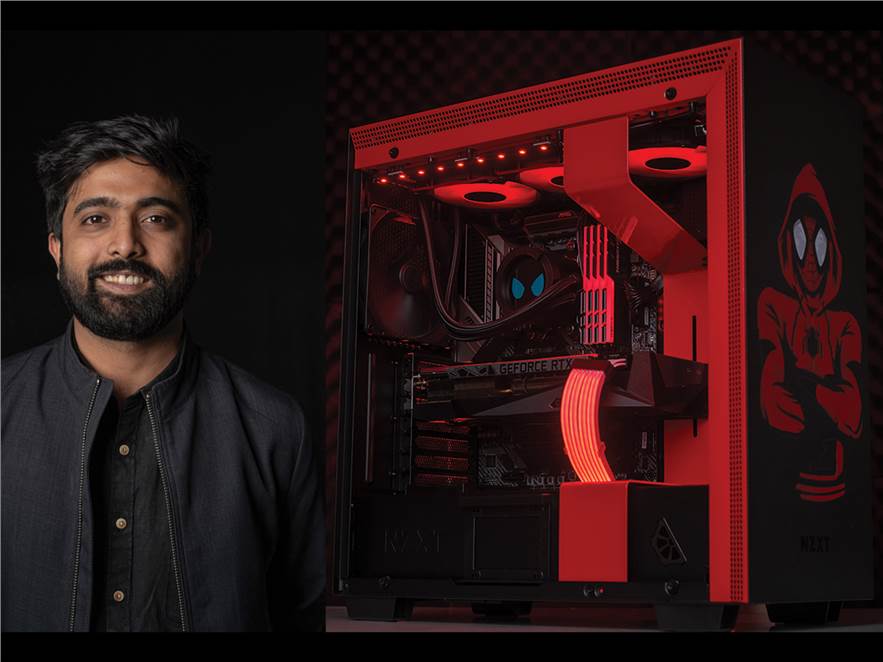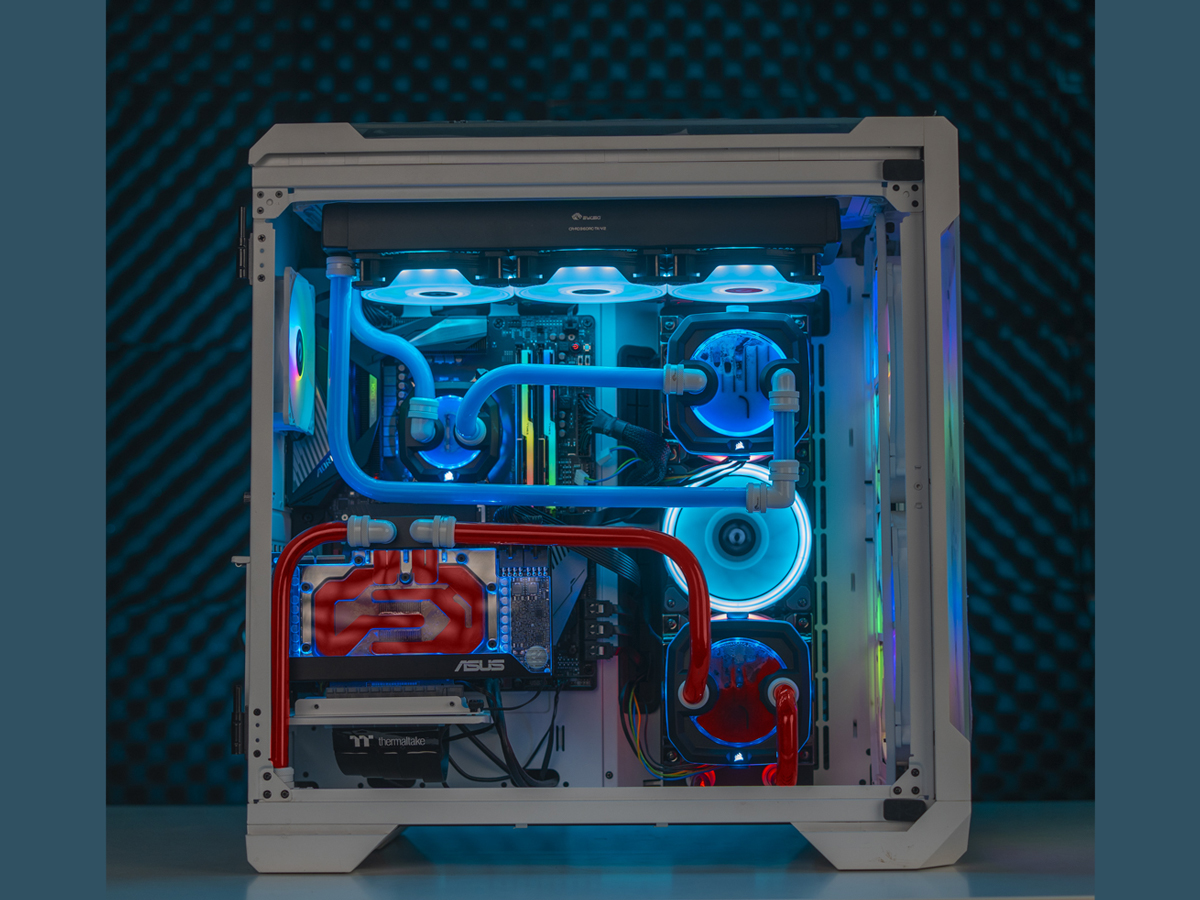Mohd. Ahmer tells us the secrets behind building and shipping performance desktops for gamers and enthusiasts in need. You can say he’s the MVP of sorts. We happened to review a gaming PC fitted with top specs from theMVP. If you want to read the review of the MVP gaming PC, click here. Make sure to read our full discussion with Ahmer first!
I made this: Mohd. Ahmer
Catching up in fames per second

1) What is The MVP and how are you finding ground in a country dominated by gaming laptops?
TheMVP is a PC Hardware Company that is focused on making it easier to buy performance PC's in India. We've been around since 2015 now and the customer response has been fantastic so far - We've built and shipped thousands of PC's to more than a hundred plus cities in India.
For all the mobility and convenience that a laptop offers - the compute power on offer is significantly lesser than a desktop for similar specifications - the two biggest factors - Cooling and power draw restriction are a non-issue for a well-built desktop. The cost of mobility (laptops) in the performance space is quite high when compared to a like-for-like desktop variant. That being said, performance laptops is a very quickly growing space, but in our view - its actually eating into the consumer laptop category. These are people who want mobility and some compute - they were never desktop consumers.
For high-end gaming, streaming and professional applications such as rendering, video editing, machine learning, AR/VR there is currently no mobile substitute, simply because the level of computing required is too high, and laptops that support performance like that become so bulky that they're basically desktops at that point.
2) When you custom build a PC for a customer, what are the dos and don’ts for the process?

PC building by nature offers endless customization by use case and budget requirements - and our website and our consultation process allow for that. You can endlessly iterate and configure your own custom build on our website, but if you want to save yourself the hassle - our consultants take over.
We begin by understanding your use case in a bit of detail and then work out the best fit configuration that fits everything that you want to accomplish without breaking the bank. Once you're happy with your configuration we hand this over to operations who work on the rest of the process.
I think by far the biggest ‘do’ is building your configuration around YOUR use case. You probably don’t need a super high-end graphic card if you’re not picking up a 4K monitor, basically avoiding any overspending. Secondly, ask questions and lots of them. Questions about the different software they use, trying to understand in depth about their workflow and stuff. It’s surprising how much the configurations change when the fog clears over the actual use case. A lot of times the reference point for customers are standardised offerings from OEMs which almost never fully check all the boxes.
Another ‘do’ would be exhaustive testing. Once built every system is put through a 100+ point quality check which looks at a host of things from assembly errors, to cable management, to performance and temperature tests under full load. This is the longest part of our process, and can sometimes take as much as 72 hours. The goal is to ship a plug-and-play machine that basically works as soon as you hit the power button.
Don’t assume that higher-priced components are better. For example, there is simply no point in getting a power supply that is two and a half times above your total power draw. Fun fact, you almost never need anything above a six-core processor for gaming. Even if you are cranking things all the way up to 4K.
3) Our PC reached intact and very well packaged but how challenging is it to ship these PCs across to the customer?
We wouldn’t call it ‘challenging’. We use one-day air shipping for a majority of the cities with good connectivity.
Over the years we have standardized protective packaging (down the GSM of the bubble wrap), the thickness of carton boxes, have specialized internal cushioning which makes sure NOTHING moves inside. In fact, a lot of our suggestions/feedback make their way to OEMs with respect to how their packaging should be to avoid transit issues.
We’ve largely solved the transit problem which we will admit was perplexing when we started in 2015 - multi-layered protective packaging, internal cushioning and a pre-dispatch checklist that makes sure everything is in order before shipping.
4) If the customer wants to upgrade a specific component of the PC a few years down the line? Do you’ll offer such services?

Absolutely! In fact, there are several customers who return after a couple of years to tinker with their builds and upgrade parts.
5) How does one reach out to your after-sales team and what type of warranty does the MVP offer to the customer?
theMVP has just one toll-free number. Whether you want to build something with us, or need support with an existing build, that's the number you call. You will speak to a human up-front, and you'll be put onto an after-sales / service person immediately. Our service promise is that you'll never have to speak to more than 1 person before getting to the person who will solve your problem, no matter who it may be.
We offer a 2-year 'doorstep' warranty. This means, in most cases, you'll not have to ship the product to us. Typically an after-sales engagement begins with remote support, at which point we assess what needs to get done. From there, we deploy a service person to your location who will then try and resolve the issue - Offering a standby part in case a lengthy RMA process is needed. In rare cases, where onsite service is not enough - we do ship builds back to our base location.
6) How supportive are the brands in providing components even when there’s a worldwide supply chain problem?
The thing with the Indian PC market is that we've never been seen as a major consumption hub, in fact, volumes in India for most performance hardware has gone up only very recently. Therefore, in the context of a global allocation, the Indian Sub-continent typically gets serviced poorly. That being said, most brands have been very supportive in helping serve the uptick in consumer demand even through the global supply chain constraints. I think here it’s a two-way street - we keep speaking to brand marketing and sales representatives, providing them with accurate trends in component consumption which helps them put together better plans and push for better allocation globally.
7) Last question, Why is it called The MVP?
Back when we started, we used to be (and still are) huge gamers - the whole idea was that we build a PC company that 'carries' your PC experience - the most valuable player - so that's how we ended up with the name. In hindsight, we did not focus too much on the name, but what it could mean for the customer experience, and that is how the name itself became a promise to live up to.
